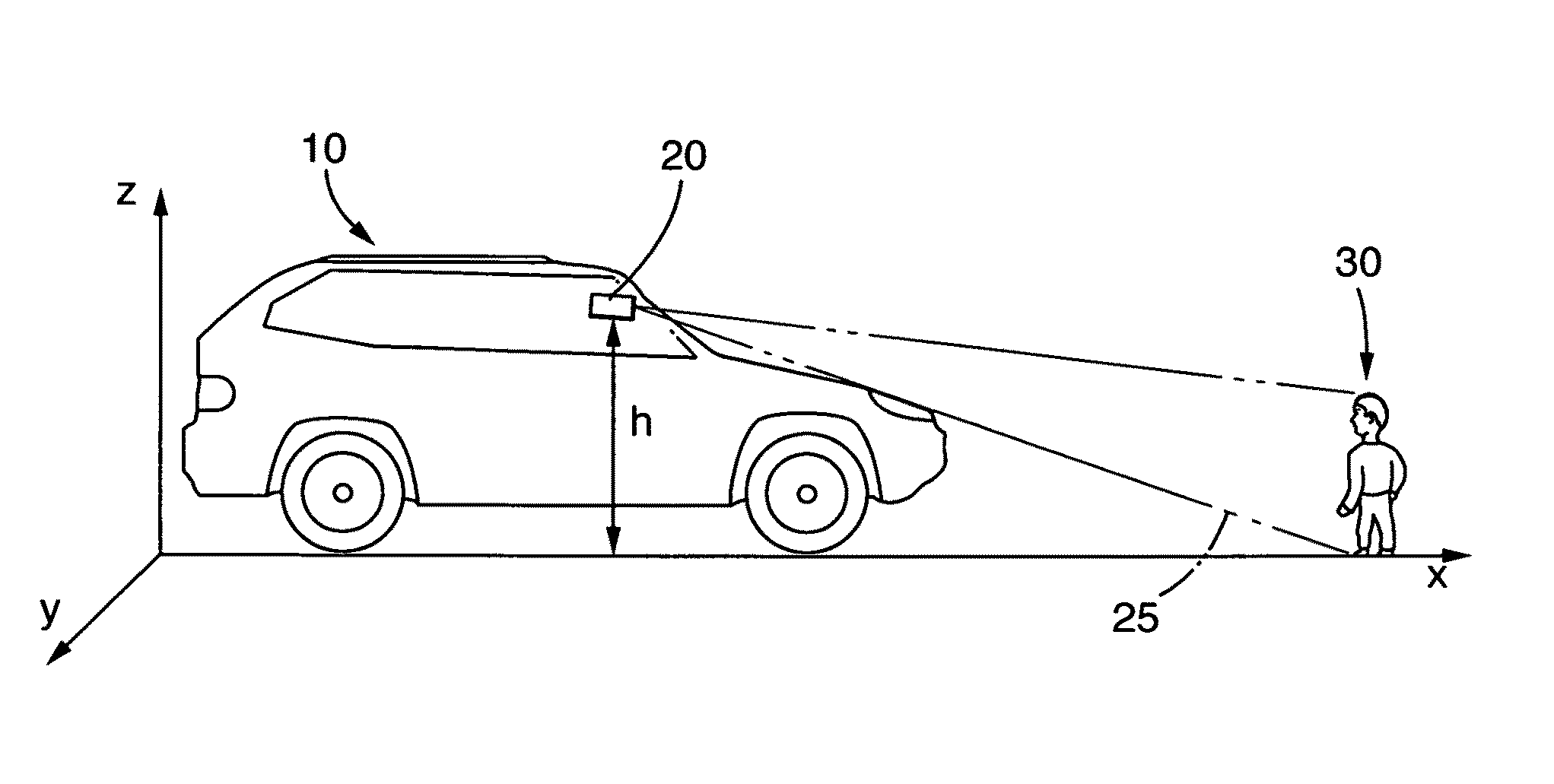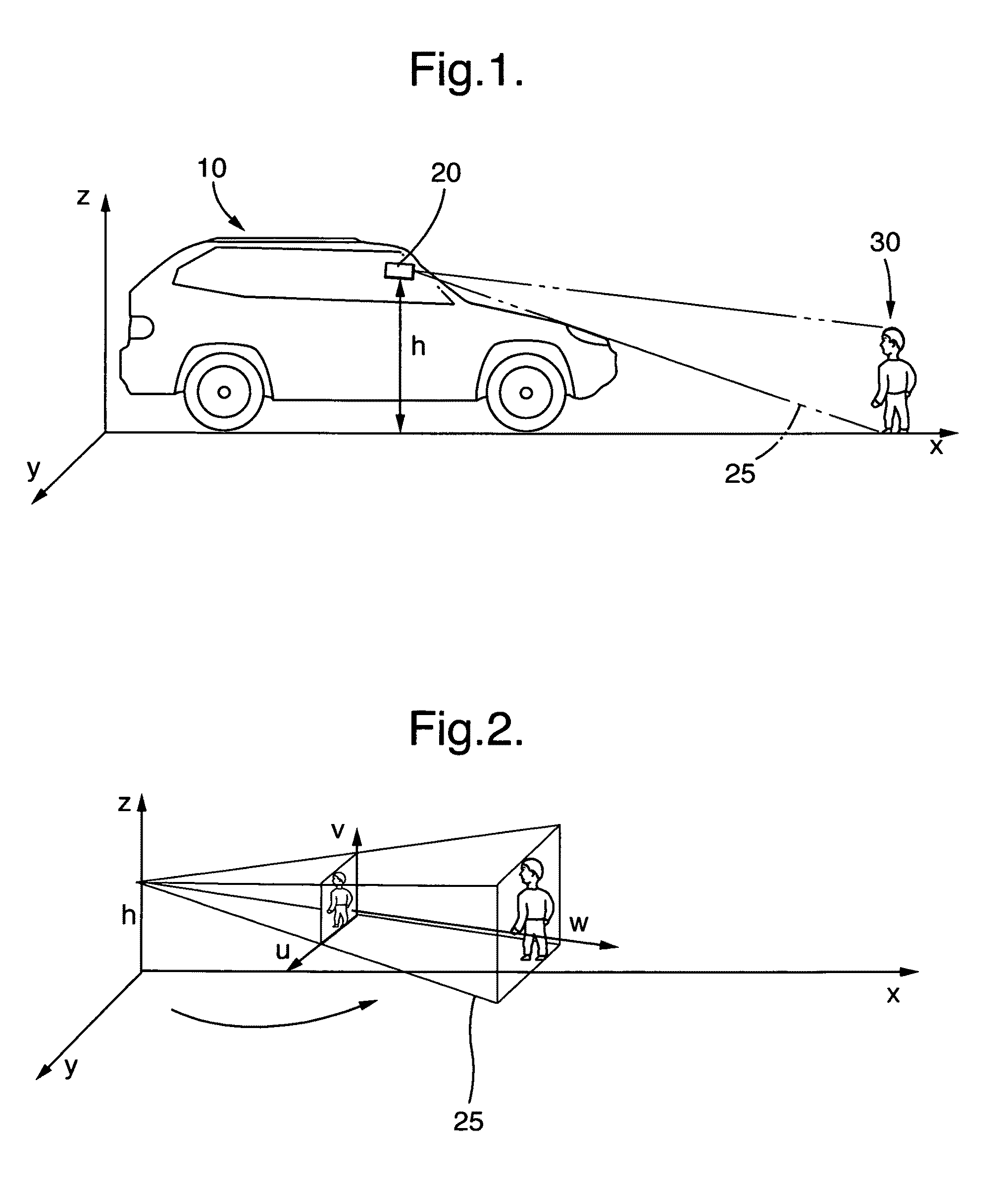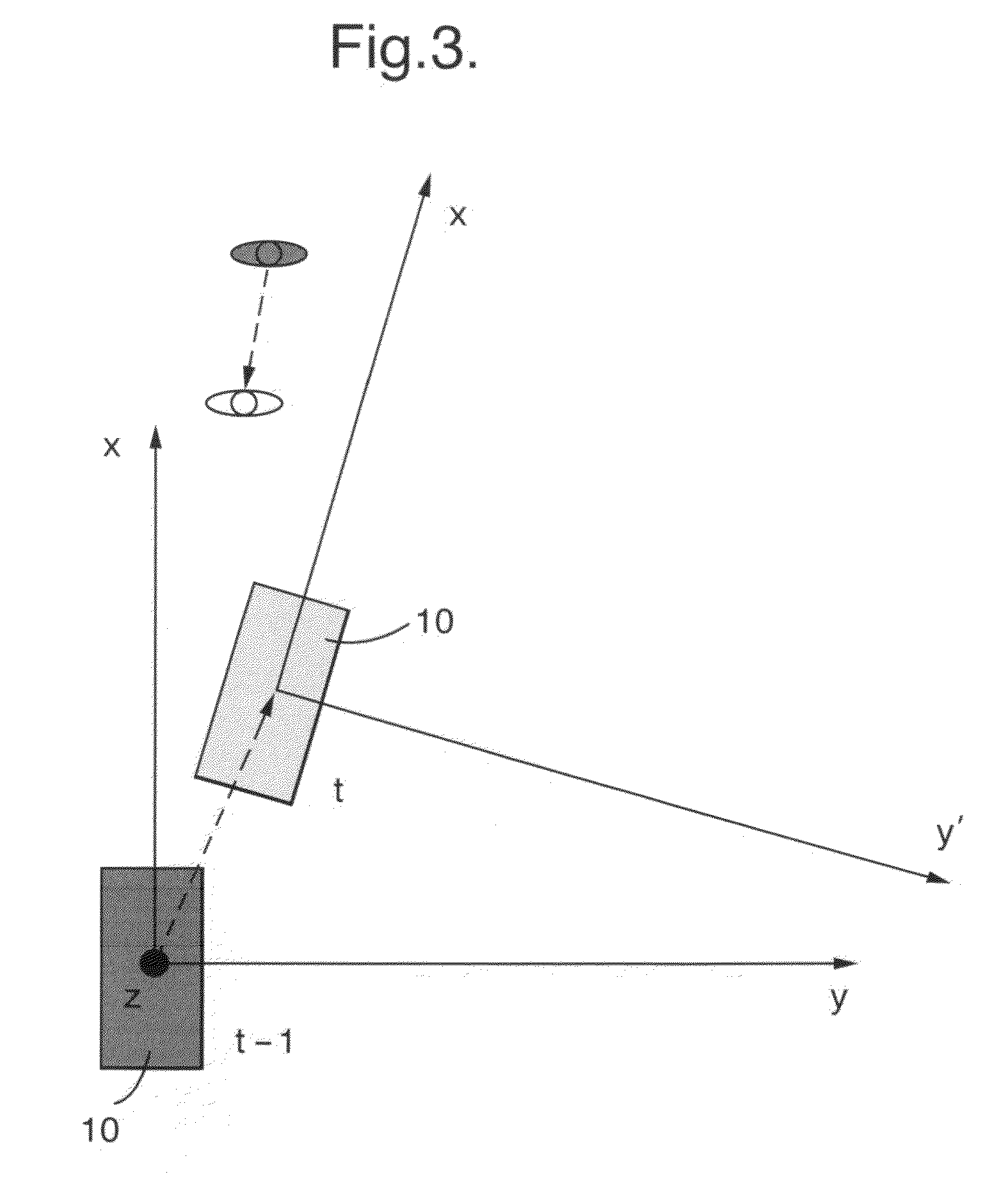Method for object tracking
a tracking method and object technology, applied in the field of object tracking, can solve the problems of difficult modeling of the movement between two images taken sequentially by the camera device, objects to be tracked, pedestrians,
- Summary
- Abstract
- Description
- Claims
- Application Information
AI Technical Summary
Benefits of technology
Problems solved by technology
Method used
Image
Examples
Embodiment Construction
[0030]FIG. 1 shows a motor vehicle 10 having a camera device 20 attached in a front region of the vehicle headlining. The camera device 20 takes an image of the environment comprising picture elements in the visual range of the camera device. It covers a pedestrian 30, as is indicated by the directional beams 25.
[0031]The space in which both the vehicle 10 and the pedestrian 30 move is spanned by the three coordinate axes x, y, z, with the x-y plane (z=0) corresponding to a road plane. The camera device 20 is above the road plane by a height h.
[0032]With the help of an image processing system, those picture elements u, v, are identified in the taken image which correspond to a pedestrian to be tracked 30. An picture element u, v is then extracted for this pedestrian 30 which represents a projection in image coordinates of that spatial point at which the object to be tracked contacts a road plane.
[0033]FIG. 2 illustrates the projection from the space x, y, z in image coordinates u, v...
PUM
 Login to View More
Login to View More Abstract
Description
Claims
Application Information
 Login to View More
Login to View More - R&D
- Intellectual Property
- Life Sciences
- Materials
- Tech Scout
- Unparalleled Data Quality
- Higher Quality Content
- 60% Fewer Hallucinations
Browse by: Latest US Patents, China's latest patents, Technical Efficacy Thesaurus, Application Domain, Technology Topic, Popular Technical Reports.
© 2025 PatSnap. All rights reserved.Legal|Privacy policy|Modern Slavery Act Transparency Statement|Sitemap|About US| Contact US: help@patsnap.com



